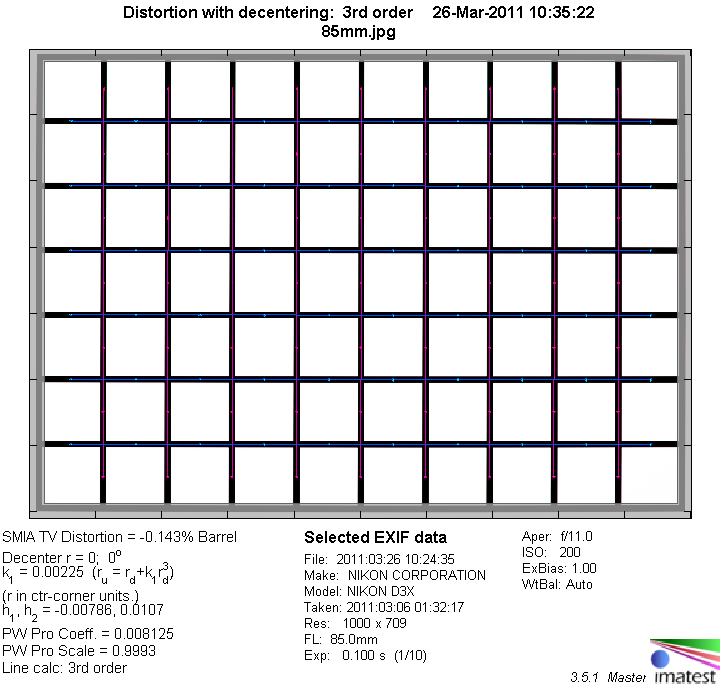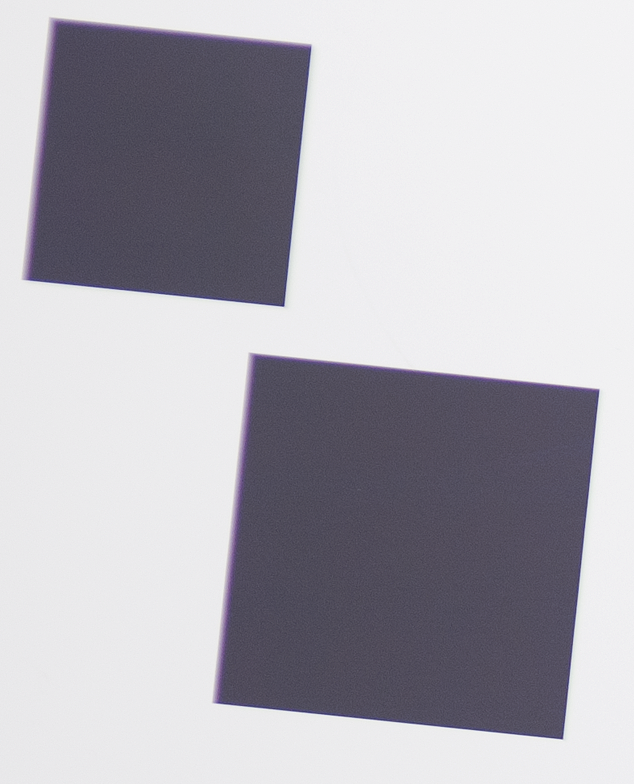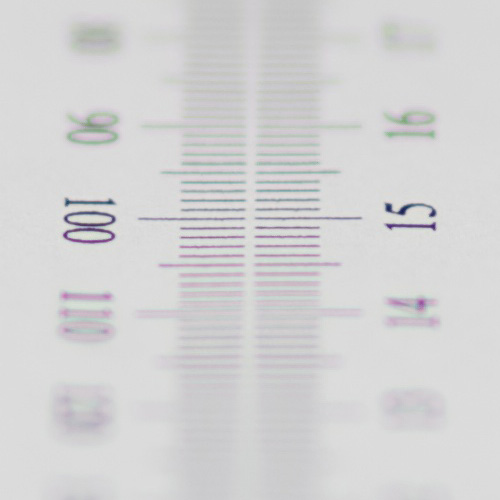|
Sigma AF 85mm f/1.4 EX DG HSM (FX) - Review / Test Report - Analysis |
|
Lens Reviews -
Nikon / Nikkor (full format)
|
|
Page 2 of 3

Distortion
The Sigma produces an absolutely negligible degree of barrel distortion on full format cameras.

The chart above has a real-world size of about 120x80cm.
Vignetting
Typical for ultra-large aperture lenses there's quite a bit of vignetting at max. aperture. You will notice this (~1.3EV) in field images. The situation eases at f/2 but you will need to stop down to f/2.8 till the problem is really resolved.
We're performing our vignetting analysis based on
(uncorrected) JPEGs straight from the camera. The JPG engine of the Nikon D3x features a rather flat
gradation curve, thus has a moderate contrast characteristic, resulting in comparatively low vignetting figures - the
corresponding Canon figures are roughly 40% higher due to the more
aggressive default contrast setting.

MTF (resolution)
The Sigma produced fairly typical resolution figures for such a lens. Resolution is excellent in the image center at f/1.4 already but the borders/corners are rather soft in the full format scope. However, the level of contrast is very high and e.g. better than what we've seen from the Zeiss ZF 85mm f/1.4 and the Nikkor AF-D 85/1.4. The quality increases gradually when stopping down. In the center it's downright outstanding from f/2 to f/8. However, the borders/corners remain unimpressive at f/2 and f/2.8. You need to stop down to f/4.0 in order to get good results across the image frame and very good results are possible from f/5.6 onwards.
The field curvature is marginal and the overall centering quality of the tested sample was very good. In addition, the amount of focus shift when stopping down was very low.
Please note that the MTF results are not directly comparable across the different systems!
Below is a simplified summary of the formal findings. The chart shows line widths
per picture height (LW/PH) which can be taken as a measure for sharpness.
If you want to know more about the MTF50 figures you may check out the corresponding
Imatest Explanations

There is one issue that has prevented better corner/border results: the resolution figures suffer quite a bit due to rather pronounced coma at large apertures - very sharp contrast transitions towards the center, soft contrast transitions towards the outer image field. The shot below, a crop of our MTF test chart, illustrates the issue. It's also visible in the image of the fence in the sample section on the next page.

Chromatic Aberrations (CAs)
Lateral chromatic aberrations (color shadows at harsh contrast transitions) are generally very low with an average width of around 0.6px at the image borders. This is an excellent result in the full format scope and certainly no issue in the field. In addition, CAs can easily be corrected in software or by the camera itself (if you shoot JPEGs and own a current Nikon DSLR).

Bokeh
The quality of the bokeh (out-of-focus blur) is a primary aspect for such a large aperture lens. The Sigma is capable of delivering very pleasing results here. Out-of-focus highlights have a very smooth inner zone and they remain circular till f/2.8. At f/4 you can spot some traces of the aperture shape. The highlight discs deteriorate to "cat's eyes" towards the image corners - this is rather normal though (a vignetting effect). The foreground blur is buttery and the background is also very smooth albeit a tad more nervous.

Bokeh Fringing / Longitudinal Chromatic Aberrations (LoCA)
LoCAs (non-coinciding focal planes of the various colors), sometimes called "bokeh CAs", are a general problem in this lens class. As you can notice below the halos have different colors - magenta (red + blue) in front the focus point and green beyond. The Sigma struggles somewhat more than usual here. The color fringing is very pronounced at f/1.4 and f/2. The effect remains visible at f/4 and there are also traces left at f/5.6.
These shots also show the almost complete lack of focus shift when stopping down, as mentioned in the MTF section.
|
Move the mouse cursor over the f-stop marks below to observe the respective LoCAs
|
| f/1.4 |
f/2 |
f/2.8 |
f/4 |
f/5.6 |
|

|
|